Whether created or curated by the IA Experiential Design team, original works of art can significantly enhance the experience of a space. While some of our clients have private collections they want featured in traditional or creative ways, others aim to commission or purchase art for a variety of reasons—to inspire; infuse excitement or a local vibe into the workplace; increase brand awareness; or make an aesthetic statement. As designers, we draw on many sources and work in a variety of ways to achieve those objectives for our clients.
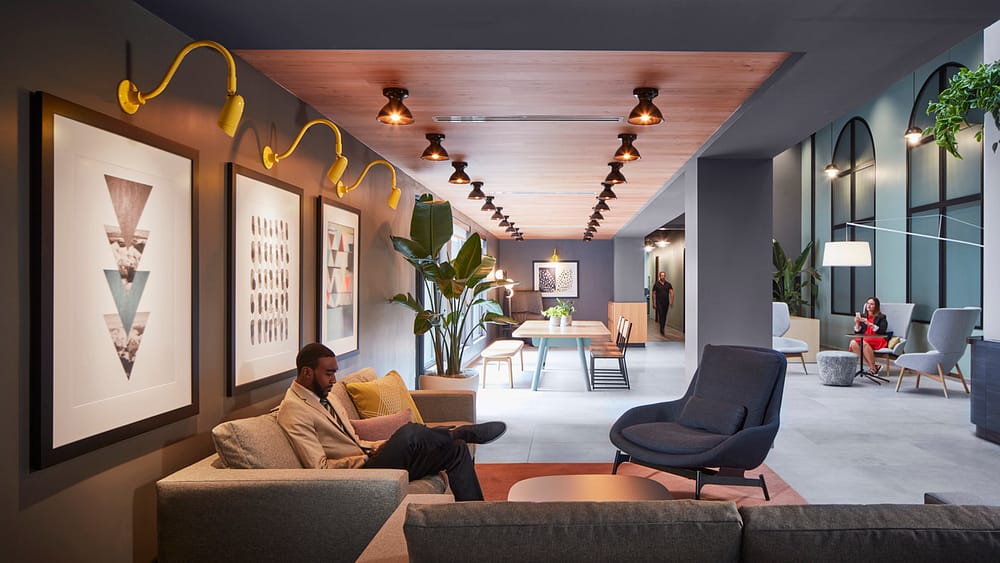
Sourcing Artwork
More than ever our clients want to interact with the community, so we often partner with an art consultant connected to local creatives, which is what we did to identify regional, diverse artists for the TIAA Charlotte campus renovation. For other clients, locally-celebrated street artists are an appealing option, particularly as muralists—the vibrancy and iconography of their style are familiar and resonant with employees. Case in point, on a two-story wall at Makers Gym Studio, a co-working space for professional creatives, entrepreneurs, and agencies, a mural by famed street artist JC Ro depicts Andy Warhol and Jean-Michel Basquiat. Both artists are wearing boxing gloves in homage to their famous collaboration, Basquiat’s paintings of boxers, and the grit and passion that drives creatives.
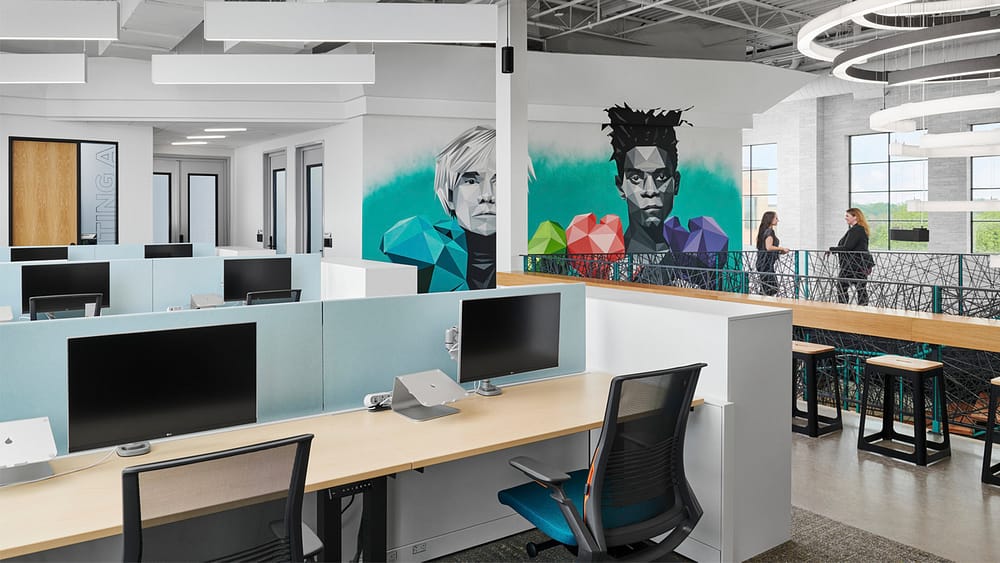
Sometimes we identify an artist by unintentional discovery or internet search. For instance, we needed an illustrator to create portraits of a client’s legacy leaders rendered in a particular style. Each portrait would adorn an honorary plaque at the entrance to a campus building named after that leader. By chance, I found an illustrator on Instagram. An account I follow featured his work, and I knew immediately he could deliver the portraits we envisioned.
Another major source of artwork is ArtLifting, an organization IA has worked with on multiple projects. While conducting maker groups in Boston, social worker and ArtLifting co-founder Liz Powers realized there was no platform for the quality artwork produced in shelters and centers for the disabled—no chance for those artists to sell their works. ArtLifting is changing that. The company currently represents 160 artists in 24 states and has customers, including major corporations, in 47 states and on five continents. The artists earn 55% of the profit from the sale of their work, with 1% allotted to art supplies for nationwide art groups; the remaining 44% supports the ArtLifting mission. I feel very fortunate to have been able to partner with Powers in bringing awareness to ArtLifting’s mission and have mentored IA professionals about working with the architecture side of the arts industry.
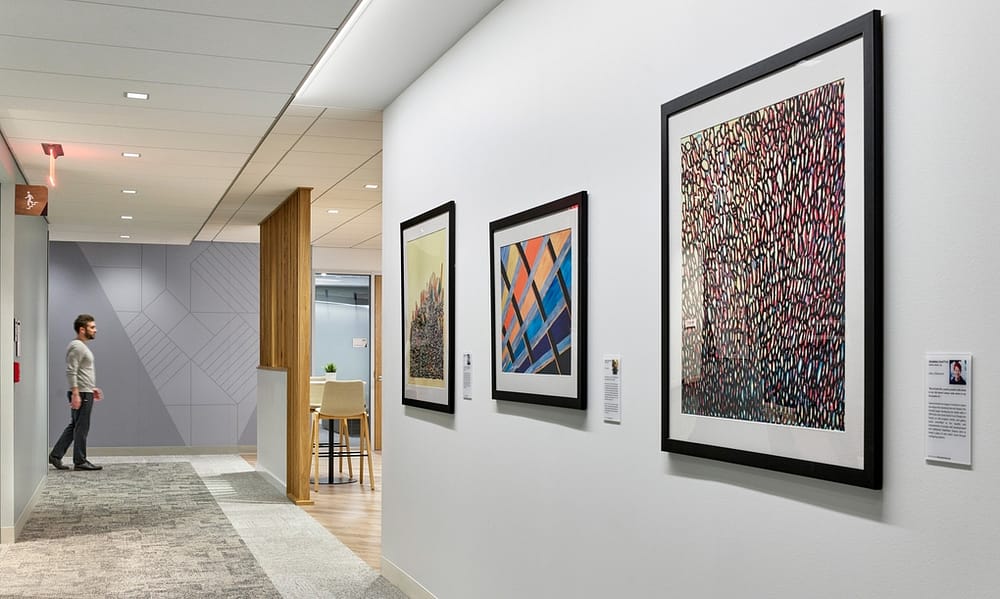
Working with Existing Collections
For clients with an existing collection, we might take a straightforward gallery approach or position works throughout the design. For the BMO Chicago Tower project, recently completed by IA, we collaborated with their internal curator to determine strategic placements. We used that same tactic at the McDonald’s Headquarters and the William Blair Headquarters, among others.
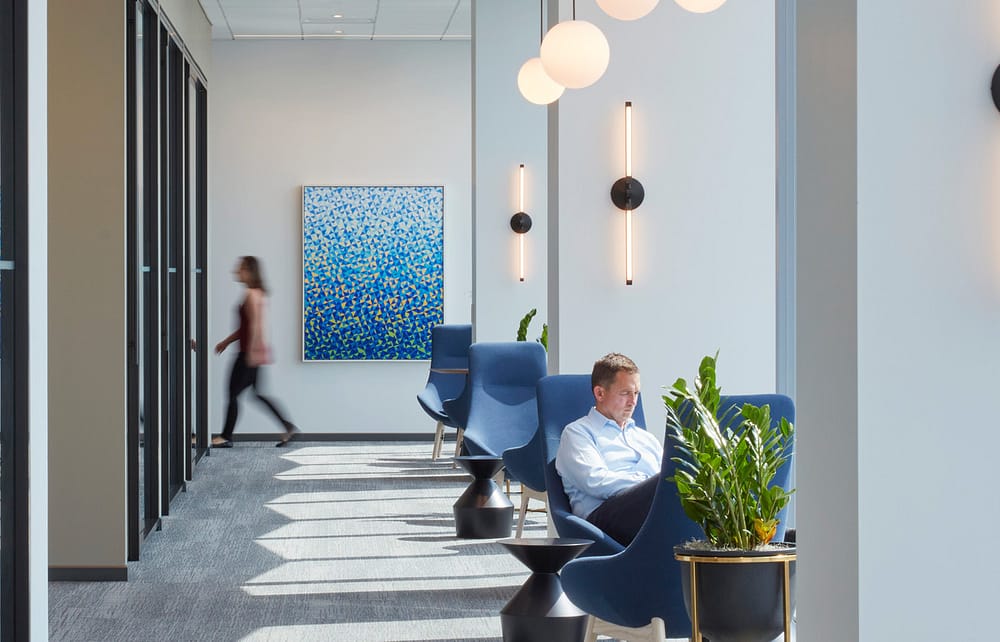
Sometimes a client asks us to reframe their collection. When redesigning CNA’s headquarters, we reframed the art of elementary school children the company had collected over the years as part of a community philanthropic effort. For another client, we made high-resolution scans of their collection to be digitized and displayed in digital frames throughout their workspace.
Original IA Artwork
IA’s experiential design team often generates original works within a project’s scope, as well as regularly crafting brand features, installations, and wayfinding elements. For S2G Ventures, for instance, we created a series of original food pun illustrations, detailing our creative process and inspiration in a prior IA blog post.
Original IA artwork is often inspired by the client’s history or the project’s context. A configuration of crushed paper cups cast in bronze at Bank of America’s offices celebrates their proud support of the Chicago Marathon (one of the world’s premiere marathons) since 2008. The cups allude to the need to stay hydrated for peak performance as well as the many volunteers who support the event. It also tells the sustainability story of Bank of America’s efforts to collect the cups after the race, which they’ve historically used as compost in neighborhood community gardens.
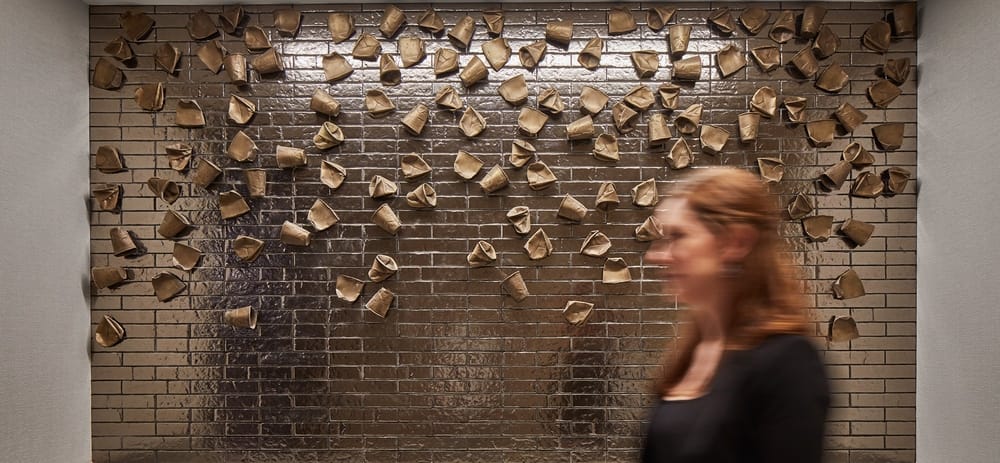 Bank of America, Chicago. Photography Tom Harris.
Bank of America, Chicago. Photography Tom Harris.
A client’s business offerings can also inspire our creatives. A bespoke hand-painted mural on glass behind the reception desk at Sterling Bay Headquarters abstractly references the professionals, clients, and craftsmen that have contributed to the company’s success.
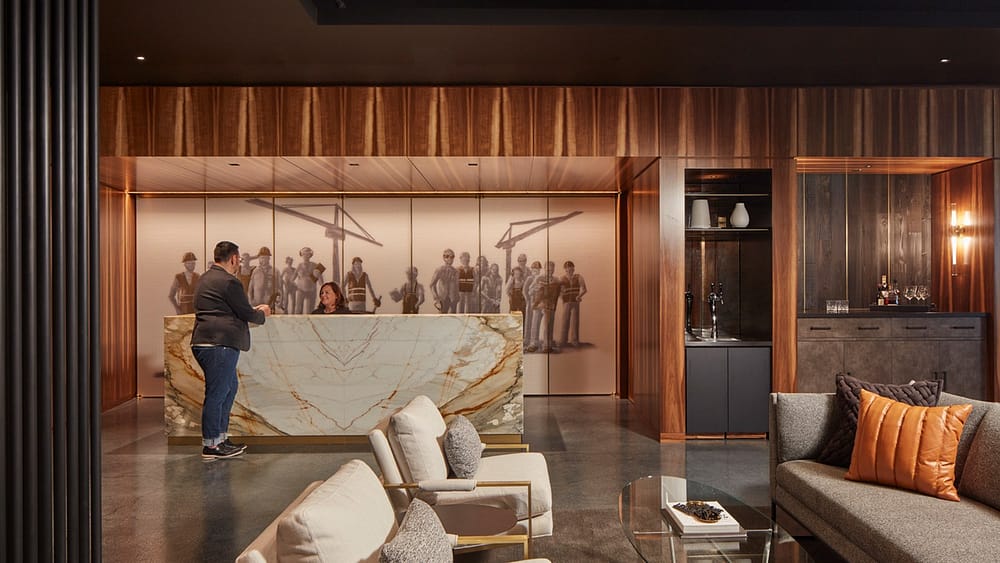
Works of art can realize a variety of expressions and media. For the Austin headquarters of a confidential technology client, we created a series of dimensional mandalas referencing the variety of opportunities and career paths featured on the site.
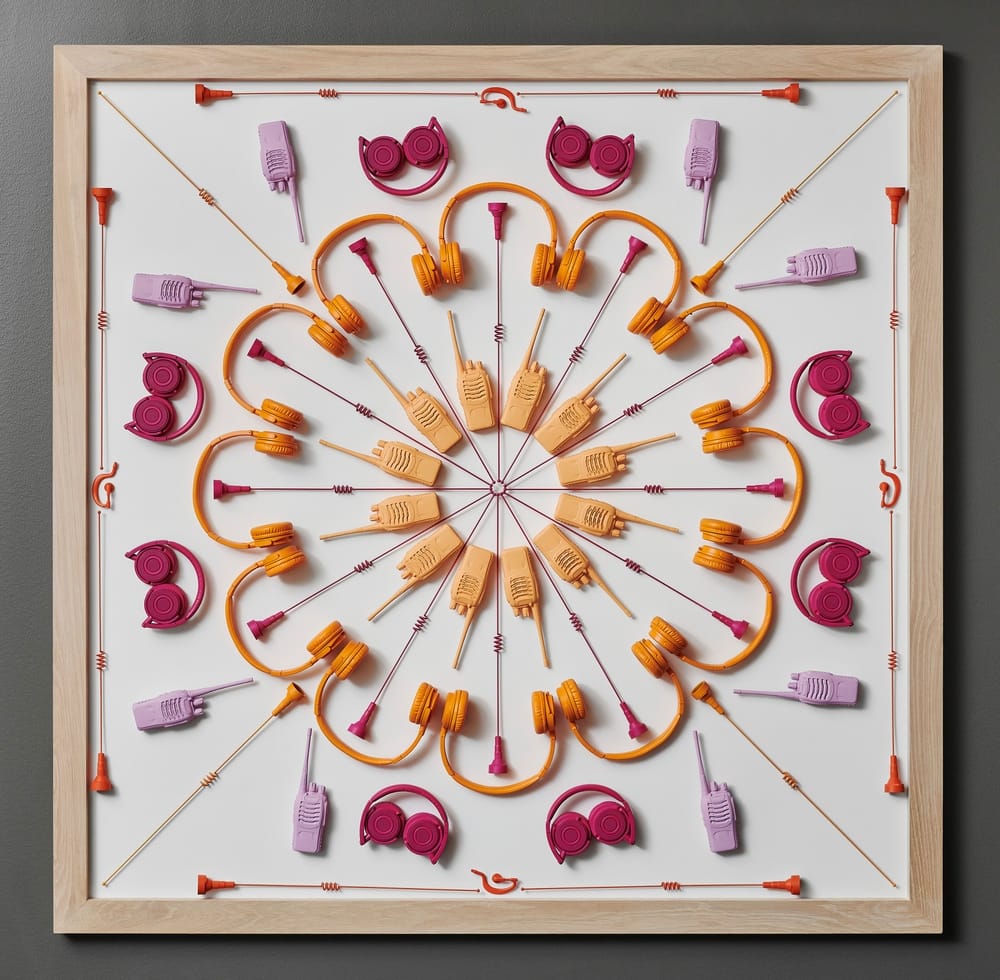
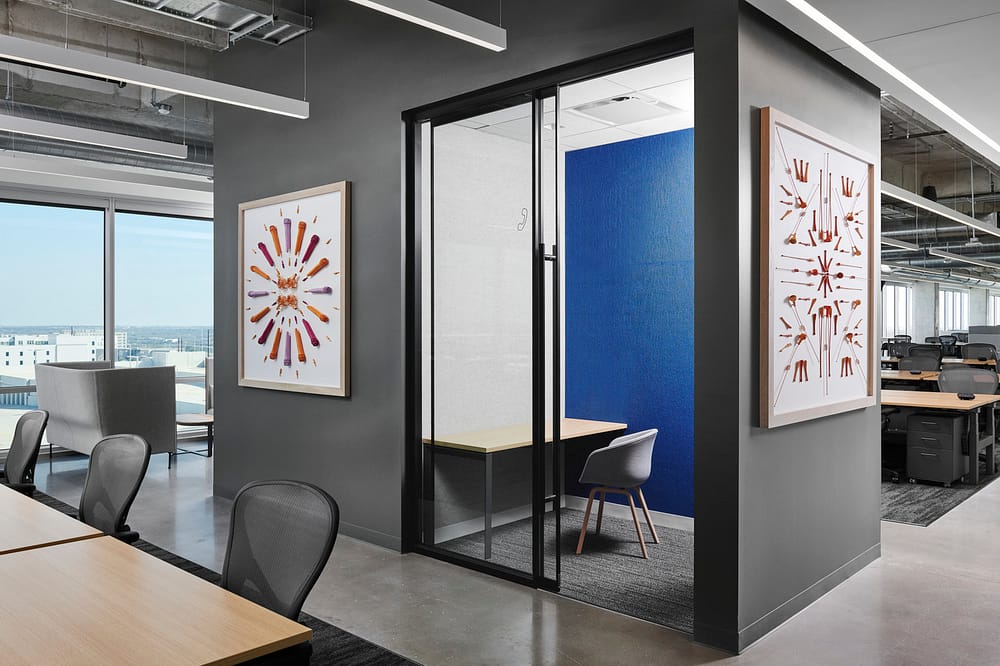
With many formats and sources offering options for a highly-customized approach, original artwork can add a special sizzle to a project. Creativity is at the core of every environmental design. The creation or use of original art can often be the key to driving a positive, engaging employee or visitor experience that draws people in.